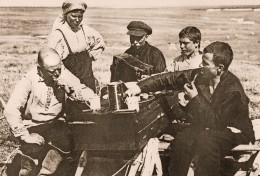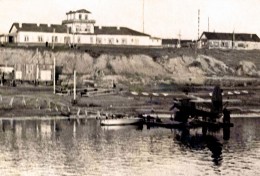Issue 4 (85)
| DEATH IN DANZIG | |||
|---|---|---|---|
| Year | 2024 | Number | 4(85) |
| Pages | 42-50 | Type | scientific article |
| UDC | 94(44)”18” | BBK | 63.3(4Ôðà)521 |
| Authors | Gladyshev Andrey V. |
Topic | ANTHROPOLOGY OF WAR IN THE MIDDLE AGE AND MODERN TIMES |
| Summary | Danzig, located at the mouth of the Vistula River, was of particular importance in Napoleon’s plans. During the retreat from Central Europe, the Emperor of France entrusted the defense of the city to General Rapp. The city’s garrison withstood eight months of blockade and four months of siege (from January 21, 1813 to January 2, 1814). Ultimately, the total losses of the garrison for this year amounted to more than half of the strength, or approximately from 19 to 21 thousand. Moreover, the combination of combat and non-combat losses, according to various sources, is interpreted within 1:7. Non-combat losses were especially large from January to April 1813, when a typhus epidemic was raging in the city and there were no large-scale military operations. The epicenters of the epidemic were military hospitals, overcrowded with soldiers returning from Russia. From the military, the epidemic quickly spread to the urban population. Estimates of the number of civilian deaths in Danzig range from 5.5 to 7.5 thousand. Military doctors who worked in Danzig at that time and subsequently presented their dissertations on the epidemic noted that among the “predisposing causes” of the disease, in addition to excessive physical fatigue, cold and hunger, lack of sleep and uncleanliness, important factors were the inability to climatic assimilation and moral exhaustion or “loss of spirit”, especially among young soldiers, unaccustomed to the realities of front-line life and demoralized by military failures. Of the numerous and sometimes exotic means used to combat the spread of typhus, according to medical scientists, the most effective could be the rapid isolation and disinfection of the infected, but this was not feasible in practice due to the flow of patients that exceeded all expectations. | ||
| Keywords | historical epidemiology, Napoleonic wars, campaign of 1813, blockade of Danzig, typhus epidemic | ||
| References |
Cooter R. Of War and Epidemics: Unnatural Couplings, Problematic Conceptions. Social History of Medi- cine, 2003, no. 2 (16), pp. 283–302. DOI: 10.1093/shm/16.2.283 (in English). Ducoulombier H. L’Aigle et le Pou: le Typhus dans la Grande Armée. Histoire des Sciences Medicales, 2014, vol. 48, no. 3, pp. 351–360. (in French). Gladyshev A. V. [Farewell “Gift” of the Great Army: The Typhus Epidemic in Europe in 1813–1814]. Frantsuzskiy yezhegodnik [Annual of French Studies], 2021, vol. 54, pp. 91–144. DOI: 10.32608/0235-4349- 2021-1-54-91-144 (in Russ.). Gladyshev A. V. [The Anthropological Turn in Military History]. Dialog so vremenem [Dialogue with Time], 2017, vol. 59, pp. 136–150. (in Russ.). Gladyshev A. V. [The Epidemiological Turn in Historiography Is an Undeclared Given]. Dialog so vremenem [Dialogue with Time], 2022, vol. 80, pp. 172–188. (in Russ.). Popov A. I. [Dantzig]. Zagranichnyye pokhody rossiyskoy armii. 1813–1815 gody: entsiklopediya [Foreign Campaigns of the Russian Army. 1813–1815: Encyclopedia]. Moscow: ROSSPEN Publ., 2011, vol. 1, p. 400. (in Russ.). Snowden F. Epidemics and Society: From the Black Death to the Present. New Haven; London: Yale University Press Publ., 2019. DOI: 10.12987/9780300249149 (in English). Talty S. The Illustrious Dead: The Terrifying Story of How Typhus Killed Napoleon’s Greatest Army. New York: Crown Publ., 2009. (in English).
Urlanis B. Ts. Voyny i narodonaseleniye Yevropy [Wars and the Population of Europe]. Moscow: Sotsekgiz Publ., 1960. (in Russ.). |
||
| Download in PDF | |||
















